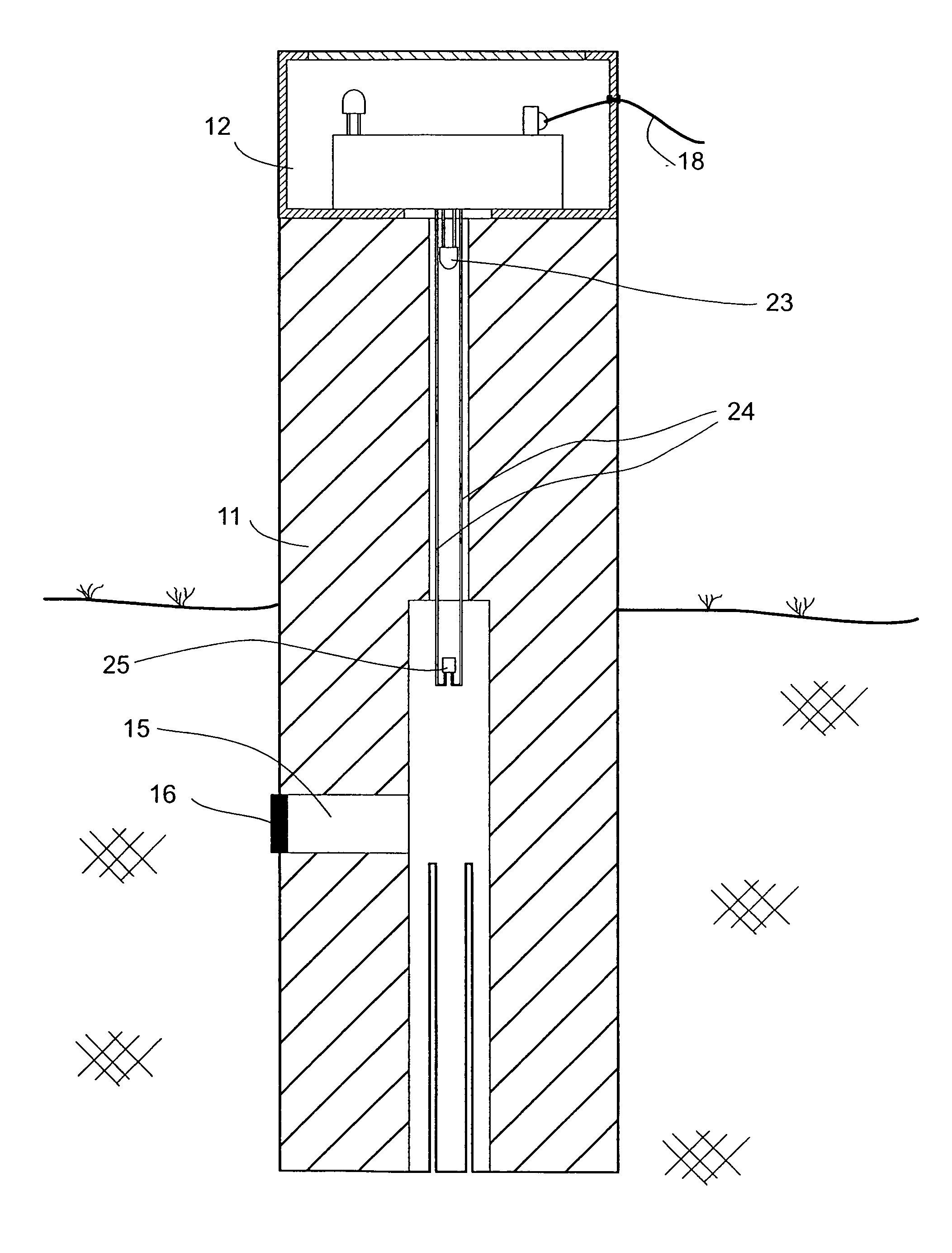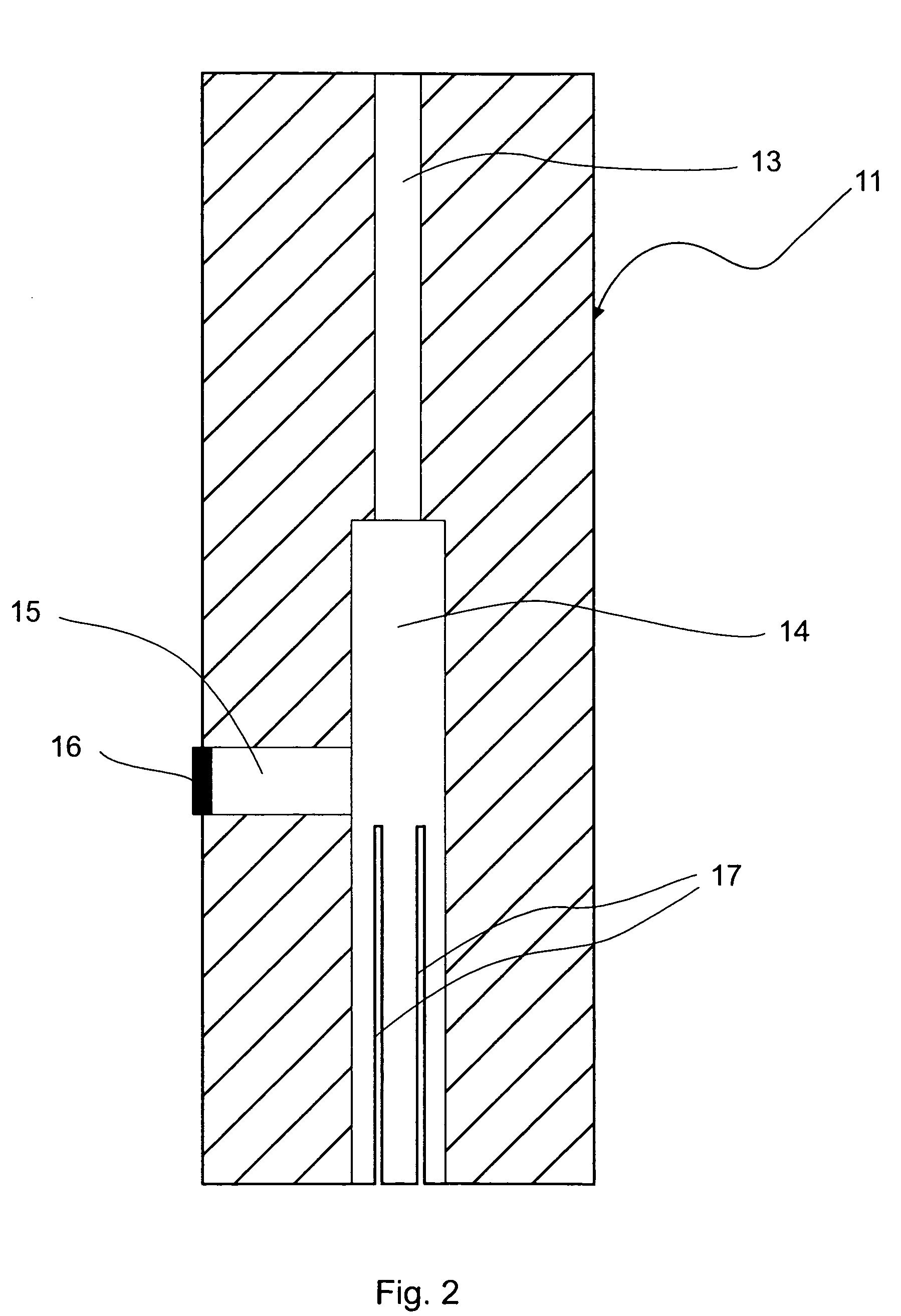Electronic termite detector
a termite detector and electronic technology, applied in the field of electronic termite detectors, can solve the problems of not being able to detect the presence of termites visually, affecting the detection effect of termites, and being unable to meet the requirements of the application of the detector, so as to reduce the amount of light received.
- Summary
- Abstract
- Description
- Claims
- Application Information
AI Technical Summary
Benefits of technology
Problems solved by technology
Method used
Image
Examples
Embodiment Construction
[0034] As shown in the drawings, a termite detection device 10 according to one embodiment of the invention is of generally cylindrical form, and comprises a lower tubular portion (hereafter referred to as a “peg”) 11, and an upper cap portion (hereafter referred to as the “cap”) 12. The cap 12 is located on top of the peg 11, and may be affixed thereto by any suitable means, e.g. a threaded connection, a bayonet mount, a clip or magnetic catch, silicon adhesive, or other suitable means. Preferably, cap 12 is detachable from peg 11.
[0035] Peg 11 is shown in more detail in FIG. 2. The peg 11 is generally cylindrical in form, and has a stepped axial bore comprising a narrow upper bore 13 communicating with a wider lower bore 14. The bores 13, 14 are open at the upper and lower ends of the peg, respectfully. A radial bore 15 communicates with the lower bore 14, and has a stopper 16 removably inserted in its outer end.
[0036] The peg 11 is typically made of wood, but may alternatively ...
PUM
 Login to view more
Login to view more Abstract
Description
Claims
Application Information
 Login to view more
Login to view more - R&D Engineer
- R&D Manager
- IP Professional
- Industry Leading Data Capabilities
- Powerful AI technology
- Patent DNA Extraction
Browse by: Latest US Patents, China's latest patents, Technical Efficacy Thesaurus, Application Domain, Technology Topic.
© 2024 PatSnap. All rights reserved.Legal|Privacy policy|Modern Slavery Act Transparency Statement|Sitemap



